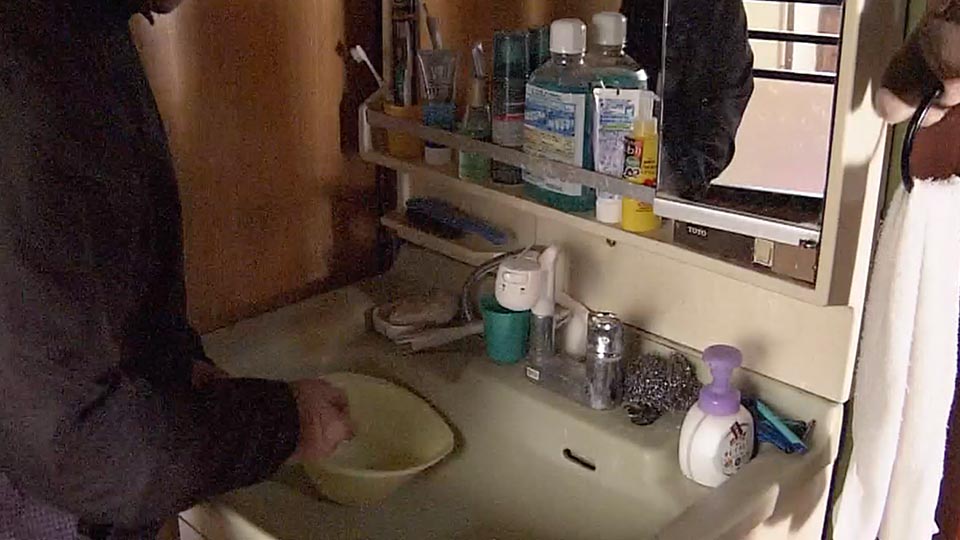Ishikawa Prefecture says they still don't know the full scale of the problem but that speed is essential, since lives may hang in the balance for "evacuees at home" in houses that were damaged or lack utilities.
An elderly mother in a damaged house
Takenaka Shuji and his 96-year-old mother Sueko are staying at their house in Suzu City, one area severely damaged by the quake.
One wall of their house has collapsed and the ground is cracked, so it has been ruled "yellow" by authorities, meaning caution is needed. They have no running water.


But they haven't moved to an evacuation center because Sueko requires nursing care. She has difficulty walking and needs assistance with personal care. Takenaka says he's also worried about the risk of infectious diseases.
"If I was alone, I could go to an evacuation center," Takenaka said. He actually wants to take his mother to a center, but would have to help her with things like getting to the bathroom, which is much further away.
The nursing care services they used before the quake have been suspended, so the family's burden has grown even as they work on rebuilding their lives.
Takenaka said, "If I could have some care for her even for a short time, it'd be very useful."
Post-disaster support
Plans call for the elderly or disabled to evacuate to special centers designated by local officials. Often, these "welfare evacuation centers" will be nursing homes or other support facilities, guaranteeing they have needed equipment and skilled staff.
But many of these places were hit by the disaster as well.
NHK has learned that of 39 facilities named as welfare evacuation centers, only 15 had opened as of Thursday.
Staff also suffer from disaster
A nursing home in Suzu City has been unable to open as a welfare evacuation center.
Nursing home officials say many staff members are dealing with seriously damaged homes, so they are short of people.
The nursing home manager says they have 20 beds, but not enough workers to care for that many people. He hopes to secure sufficient staff and open as an evacuation center.

Efforts are being made to improve the situation.
In one case, people who used a facility for the disabled in Wajima City prior to the quake have evacuated to a similar place in Aichi Prefecture with their families.
People in care may become unsettled by big changes in their environment, such as a different home or care workers. Authorities are trying to evacuate them with staff members to minimize the impact.

Expert: "A management cycle" required
Doshisha University professor Tatsuki Shigeo says people who require care should be assigned to a welfare evacuation center, but these plans should not be rigid. He says what's important is that each person receives uninterrupted care.
"Authorities must take care to have a management system in place that can find the best response for each and every situation," Tatsuki said.
